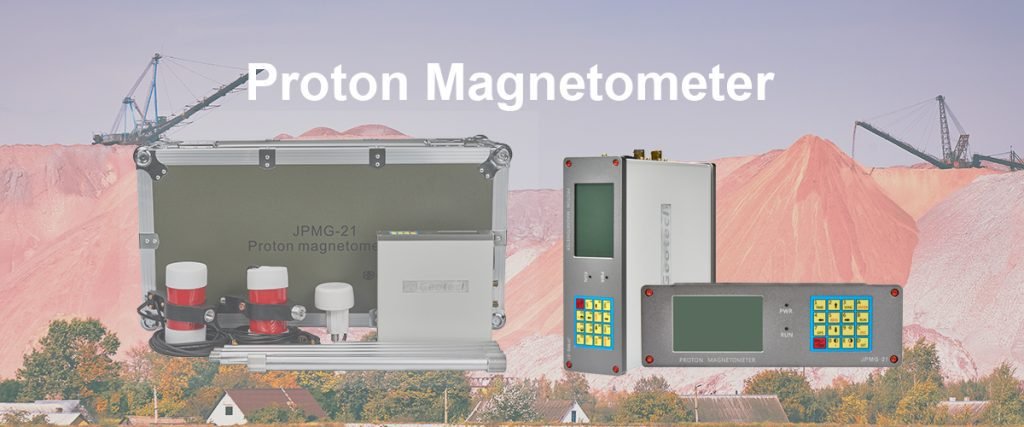Welcome to Geotech!

Cutting – Edge of Electromagnetic Survey: New Application Fields of Magnetometers
TIPS:In the dynamic evolution of electromagnetic survey, magnetometers are expanding application boundaries. This paper explores their innovative uses in cutting – edge fields like mining, environmental monitoring, and archaeology. Discover how magnetometers, leveraging magnetic field perception, drive industry development across these electromagnetic survey frontiers.

Ⅰ. Introduction
In the rapid evolution of electromagnetic survey, magnetometers are continuously expanding their application boundaries. Moving beyond traditional geological exploration, they now play pivotal roles in cutting – edge sectors like mining, environmental monitoring, and archaeology. Leveraging their precision in perceiving magnetic field fluctuations, magnetometers unlock vast potential for innovative applications. This paper delves into these novel uses across electromagnetic survey frontiers, exploring how they drive industry development and transformation.
Ⅱ. New Applications in the Mining Industry
1. Precision Mineral Exploration
In mining, electromagnetic survey in mining (also termed mineral exploration using EM survey or EM applications in mining) is transformative. Traditional exploration relied on crude geological sampling and basic magnetic detection. Modern magnetometers, however, excel at capturing faint magnetic anomalies from ore bodies. By mapping and analyzing these anomalies in detail, prospectors can pinpoint potential deposits with greater accuracy, reducing exploration guesswork and boosting resource discovery rates. This provides robust technical backing for mining operations.
2. Mine Safety Monitoring
Beyond exploration, magnetometers serve in mine safety. During extraction, geological shifts cause subtle magnetic field changes. Deploying magnetometers for real – time monitoring detects magnetic signals linked to hazards like rock movement or void formation. This early – warning capability safeguards production, expanding magnetometers’ role in mining safety.
Ⅲ. Innovative Uses in Environmental Monitoring
1. Soil and Groundwater Pollution Detection
In electromagnetic survey in environmental monitoring (also called EM survey for environmental monitoring or environmental EM exploration), magnetometers aid in pollution assessment. Pollutants such as heavy metals alter soil magnetic properties. Scanning contaminated areas with magnetometers and analyzing magnetic field anomalies helps gauge pollution scope and severity, informing remediation strategies—a novel tech approach for environmental oversight.
2. Ecosystem Research
Magnetometers also contribute to ecological studies. In wetlands, for instance, vegetation patterns and hydrological shifts influence local magnetic fields. Long – term magnetometer deployments capture magnetic signatures of ecosystem dynamics. This data offers unique insights into ecological evolution and human impact, supporting conservation and restoration efforts.
Ⅳ. Unique Roles in Archaeology
1. Underground Relic Detection
In electromagnetic survey in archaeology (also known as archaeological EM exploration or EM applications in archaeology), magnetometers are key for relic discovery. Ancient structures and tombs create magnetic anomalies due to material differences (e.g., bricks, metals) from surrounding soil. Systematic magnetometer scanning and data analysis pinpoint relics accurately, guiding non – destructive archaeological excavation.
2. Archaeological Site Protection
For discovered sites, magnetometers enable protection. Human activities (e.g., construction, tourism) can disrupt geological structures and magnetic fields. Regular magnetometer monitoring detects potential damage early, informing preservation strategies and safeguarding cultural heritage.
Ⅴ. Industry – Shaping Impact of Magnetometer Innovation
1. Technology Integration and Upgrade
Magnetometers’ new applications drive cross – tech integration. Combined with GIS and big data, they enable precise magnetic anomaly modeling and analysis. This elevates efficiency and decision – making in mining, environmental science, and archaeology, fueling industry modernization.
2. Emerging Research and Market Opportunities
These innovations spur new research—like magnetometer use in extreme environments (deep sea, polar regions)—and demand for advanced models (miniaturized, high – sensitivity). They also create market opportunities for manufacturers and survey services, fostering a sustainable industry cycle.
Ⅵ. Conclusion
Magnetometers’ novel applications in mining, environmental monitoring, and archaeology showcase their technical prowess and industry value. From precision exploration to heritage protection, they transcend traditional roles, driving innovation across sectors. As technology advances and use cases expand, magnetometers will likely empower more emerging fields, revitalizing electromagnetic survey and related industries to open a new era of application.
Reference
- Society of Exploration Geophysicists (SEG) https://seg.org/
- Society of Environmental and Engineering Geophysicists (EEGS) https://www.eegs.org/
- Geology and Equipment Branch of China Mining Association http://www.chinamining.org.cn/
- International Union of Geological Sciences (IUGS) http://www.iugs.org/
- European Geological Survey Union (Eurogeosurveys) https://www.eurogeosurveys.org/
-1.png)

